Bees and Flowers
We woke up at 7am so that we could leave camp around 8:15am which is when we have to call in to KISS on the satellite phone to tell them that we are okay. In return, they give us weather updates. We then left camp to drive to the ice sheet.
The goal for the day was to find several sites from the ice sheet to town for the three flowers we are studying. The four flowers we are studying are Salix Glauca (gray leaf willow), Vaccinium Uliginosum (blueberry), Chamerion Latifolium (Niviarsiaq, river beauty, dwarf fire weed). We needed to find 9 sites for each flower. We are then planning to visit each site every couple of days. We also want to study climate change so we are traveling between the ice sheet and town to simulate a change in temperature (temperature gradient). Of the 9 sites, 3 of the sites need to be in a cold climate (near ice sheet), 3 need to be in a medium climate (between ice sheet and town), and 3 in a warm location (close to town). This is why we planned on starting at the ice sheet so we could work back to town which is 40 km away. Additionally, Christine wants to catch some bumble bees to see if they have parasites, because it is possible that the bees that are being imported to Greenland may carry parasites. She is predicting that there will be no sign, but they have no data so this will serve as a starting point. If these bees do have parasites one, sign is that the bee gets very weak because one type of parasite gives the bees diarrhea which lowers their immune system and drains their energy.
On our drive to the ice sheet we passed a plane that had wrecked several years ago. We also passed a very neat lake (Long Lake) where the ice had just started break up. Additionally, we had to pass "The Gate" which is locked unless you have the key. They gate allows cars to have access to the ice sheet and nature sanctuary.
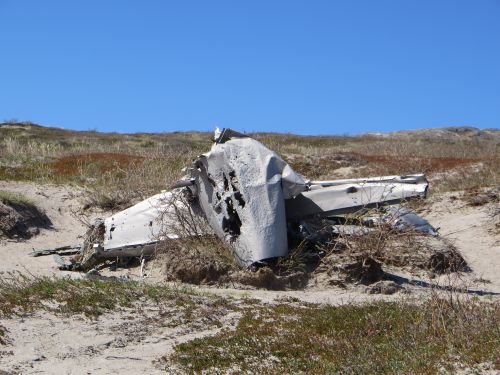 Plane that wrecked several years ago
Plane that wrecked several years ago
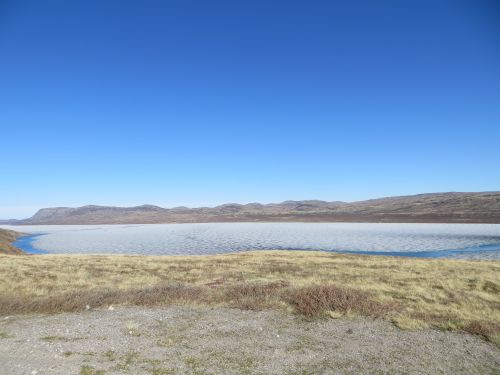 Long Lake with the ice breaking up from winter. This will probably be one of our sites.
Long Lake with the ice breaking up from winter. This will probably be one of our sites.
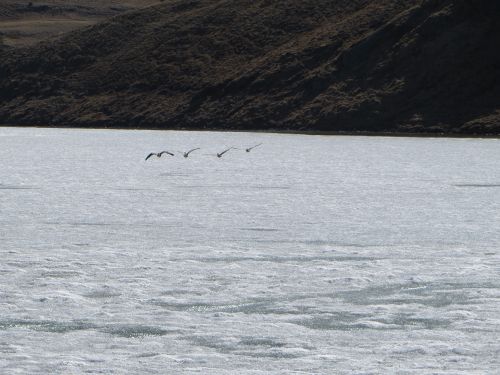 Geese flying over the frozen water at Long Lake. It was interesting to see them walking around on the lake before they took off
Geese flying over the frozen water at Long Lake. It was interesting to see them walking around on the lake before they took off
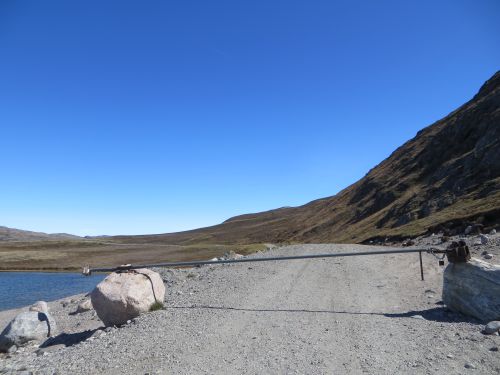 Picture of the gate that keeps cars out of the Nature Sanctuary unless you have the key
Picture of the gate that keeps cars out of the Nature Sanctuary unless you have the key
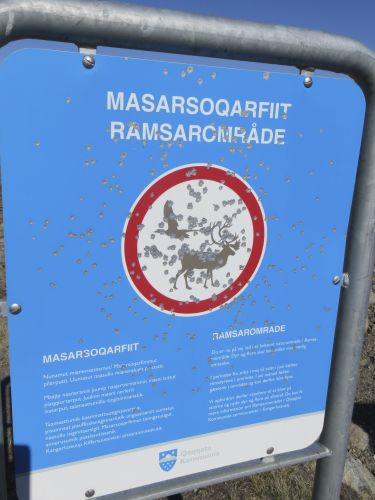 Nature Sanctuary sign. Notice that it has been shot at with a BB gun
Nature Sanctuary sign. Notice that it has been shot at with a BB gun
Once we got to the ice sheet we walked around for awhile to see if we could find any bumble bees. We had no luck but we did find a grounded iceberg. This is caused when the ice is floating in water and then the water dissapears (through run off and evaporation) and leaves the chunk of ice on dry ground.
 The ice sheet near Kangerlussuaq, Greenland
The ice sheet near Kangerlussuaq, Greenland
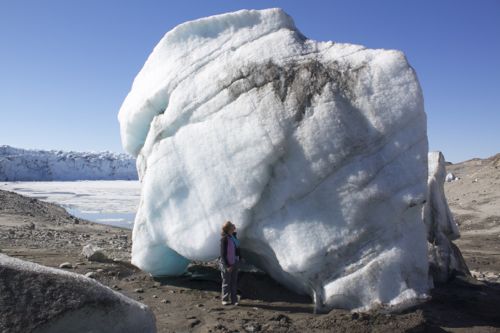 Looking up at a grounded iceberg. They were originally chunks of ice floating in water and the water disapeared leaving the ice on the ground
Looking up at a grounded iceberg. They were originally chunks of ice floating in water and the water disapeared leaving the ice on the ground
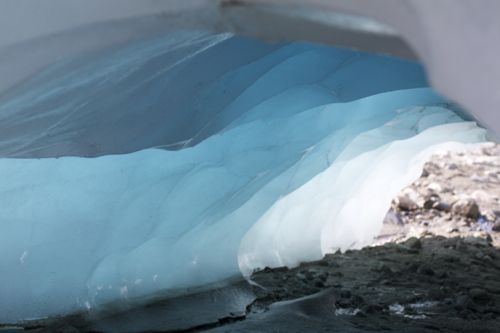 Looking in the arch of the grounded iceberg. There were several shades of blue
Looking in the arch of the grounded iceberg. There were several shades of blue
 Grounded iceberg up close. There are lots of patterns in the ice
Grounded iceberg up close. There are lots of patterns in the ice
Afterwards we walked back to the trucks and walked near the road trying to find any of our three plants. When we found a large patch we would use the GPS to mark the site so that we could return to that location later. After we returned to the car we would drive around 1 km and repeat. We discovered that willow is very common and that the best place to find Niviarsiaq is on sandy beaches near water. We also found some musk ox fur and a caribou foot.
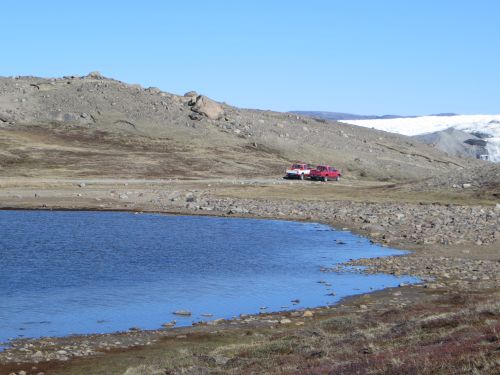 Walking back to the trucks after walking around the ice sheet to find a site
Walking back to the trucks after walking around the ice sheet to find a site
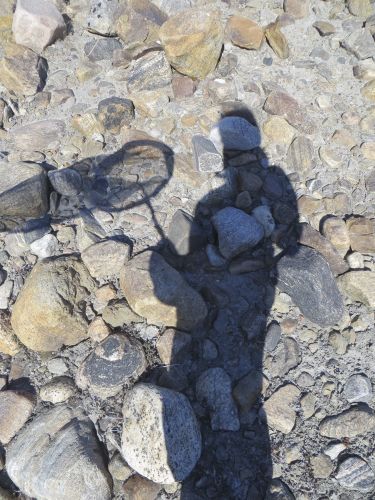 I am trying to catch a bumble bee
I am trying to catch a bumble bee
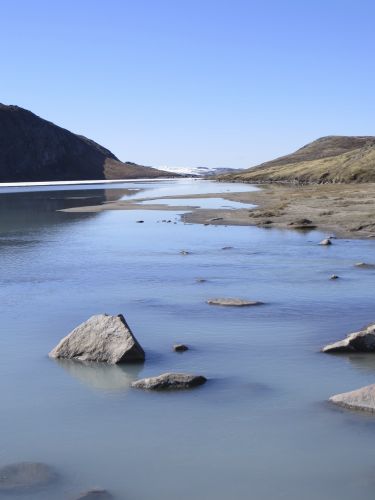 Picture of an area we were looking at for a site
Picture of an area we were looking at for a site
 Picture of an area we were looking at for a site
Picture of an area we were looking at for a site
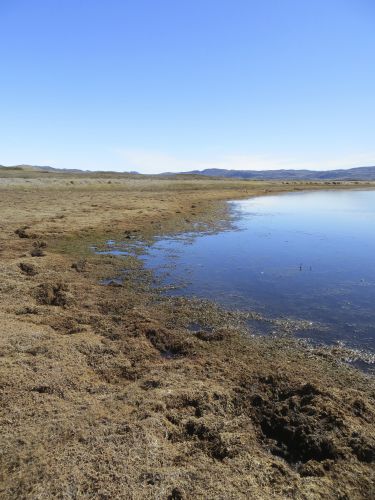 Picture of an area we were looking at for a site
Picture of an area we were looking at for a site
 Picture of an area we were looking at for a site
Picture of an area we were looking at for a site
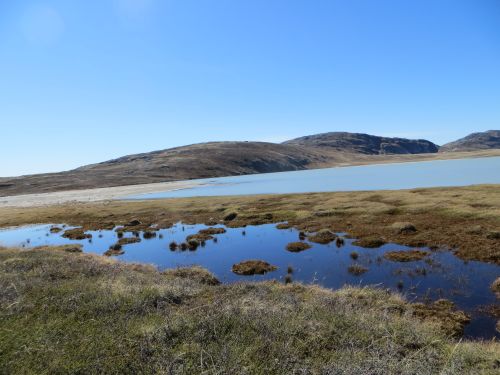 Picture of an area we were looking at for a site
Picture of an area we were looking at for a site
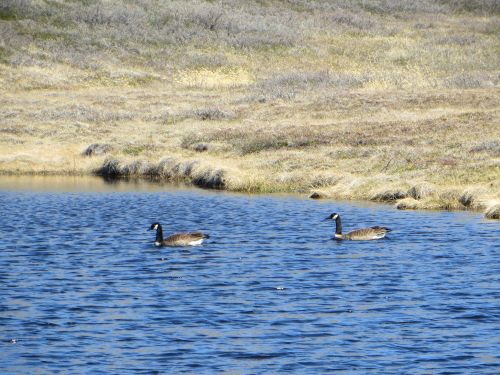 Geese in a pond at a site
Geese in a pond at a site
After a very tiring day we stopped in town to grab some additional supplies and came back to camp to make dinner. I made falafel with rice and a white sauce.
 falafel with rice and a white sauce that I made for dinner
falafel with rice and a white sauce that I made for dinner
I then worked on journals, read for awhile, and fell into a very deep sleep.
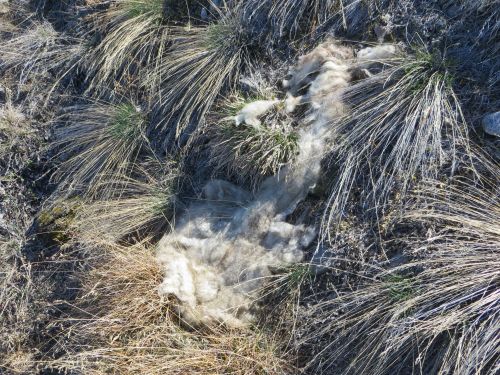 Musk Ox fur that had been shed from the winter
Musk Ox fur that had been shed from the winter
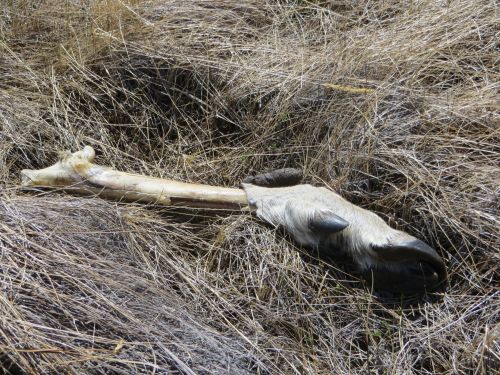 Caribou foot
Caribou foot
Strange fact of the day: There are these gelatinous blobs called lake tomatoes that are found in Arctic lakes. They are actually cyanobacteria (blue bacteria) that can photosynthesize. They may have abilities to reduce CO2 and range in size from the size of a marble to the size of a grapefruit. There can be a couple at a lake or the whole bottom of the lake can be covered. Locals cut them up and fry them like we would fry a "fried green tomato," which is interesting since they are toxic!
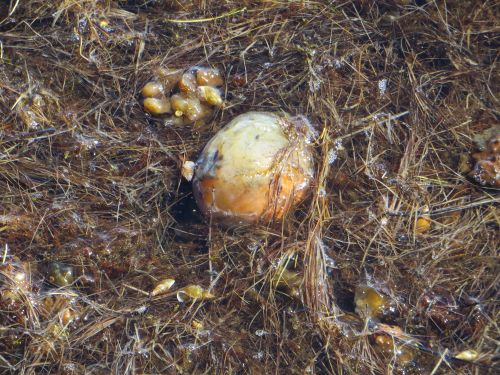 The lake tomato I found at the edge of a lake. These are blobs that are actually bacteria and can cover the bottoms of lakes. This one was the size of an orange
The lake tomato I found at the edge of a lake. These are blobs that are actually bacteria and can cover the bottoms of lakes. This one was the size of an orange

Comments